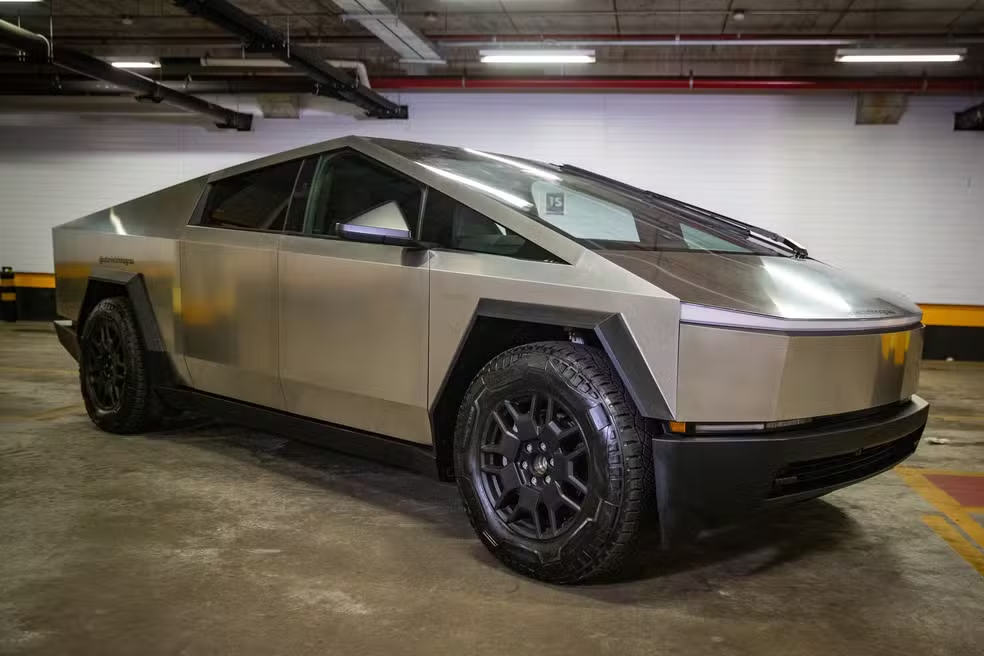In 2023, Tesla’s Cybertruck roared into the spotlight, capturing attention with its futuristic design and promises of revolutionizing urban transport. According to Electrek, pre-orders for the Cybertruck have surpassed a staggering 1.9 million, highlighting its potential impact. This article explores how the Cybertruck is set to redefine sustainable urban transportation, examining its unique features, environmental benefits, and how it fits into the broader EV landscape.
The Cybertruck’s Unique Features
Aesthetic Appeal and Design Innovation
The Cybertruck’s design is unlike anything else on the road. With its angular, stainless-steel exoskeleton and shatterproof glass, it resembles something from a sci-fi film. This bold aesthetic isn’t just for show; it’s a testament to Tesla’s commitment to durability and longevity. The exoskeleton is not only robust but also rust-resistant, promising a longer lifespan compared to traditional vehicles.
Performance and Power
Under the hood, the Cybertruck doesn’t disappoint. It offers three motor configurations, with the tri-motor version boasting a 0-60 mph time of just 2.9 seconds. According to InsideEVs, this makes it one of the fastest trucks on the market. Additionally, its range of up to 500 miles on a single charge addresses one of the most significant barriers to EV adoption—range anxiety.
Advanced Autopilot and Safety
Tesla continues to push the envelope with its Autopilot system. The Cybertruck will include the latest Full Self-Driving (FSD) capabilities, allowing for safer and more efficient urban commuting. This technology not only reduces the risk of accidents but also improves traffic flow, contributing to a more sustainable urban environment.
Environmental Benefits of the Cybertruck
Emission Reduction
One of the most compelling reasons to embrace the Cybertruck is its potential to significantly reduce urban emissions. Traditional gasoline-powered trucks are notorious for their high carbon emissions. By contrast, the Cybertruck, with its all-electric powertrain, offers a cleaner, greener alternative. According to Bloomberg Green, transitioning to electric trucks could cut urban transportation emissions by 30% or more.
Sustainable Materials
Beyond its electric drivetrain, the Cybertruck’s construction uses sustainable materials. The stainless-steel body is designed to be recyclable, aligning with Tesla’s broader sustainability goals. Moreover, the vehicle’s energy-efficient production process further minimizes its environmental footprint, setting a new standard for eco-friendly manufacturing.
Practical Value and Urban Integration
Charging Infrastructure and Range Solutions
Charging is a critical factor for any EV owner. Thankfully, Tesla’s expansive Supercharger network makes owning a Cybertruck in urban areas convenient. As reported by CleanTechnica, Tesla plans to double its Supercharger stations by 2025, ensuring that urban drivers have easy access to fast charging. For home charging, the Cybertruck supports Tesla’s wall connectors, providing a convenient overnight charging solution.
Versatility and Functionality
The Cybertruck’s versatility makes it ideal for urban environments. Its spacious interior and 100 cubic feet of exterior storage offer ample space for city dwellers. Whether you’re an urban professional needing space for equipment or a family requiring room for weekend getaways, the Cybertruck caters to diverse needs. Furthermore, its adaptive air suspension system allows for easy maneuverability in tight urban spaces, providing a smooth ride over potholes and uneven terrain.
Comparisons and Market Position
When compared to competitors like Rivian’s R1T or Ford’s F-150 Lightning, the Cybertruck stands out in several ways:
- Range: The Cybertruck offers up to 500 miles, compared to Rivian’s 314 miles and Ford’s 300 miles.
- Towing Capacity: With a towing capacity of 14,000 pounds, it surpasses both Rivian and Ford.
- Price: Starting at approximately $39,900, the Cybertruck is competitively priced, offering excellent value for its features.
Engaging Conclusion
Tesla’s Cybertruck is more than just a vehicle; it’s a statement of intent for the future of urban transportation. By combining innovative design, cutting-edge technology, and a commitment to sustainability, it sets a new benchmark for what urban mobility can achieve. As cities around the world grapple with pollution and congestion, the Cybertruck offers a glimpse into a cleaner, more efficient future.
What do you think—is the Cybertruck the future of urban transportation, or is it just a flashy concept? Share your thoughts in the comments below and join the conversation about how we can make our cities greener and more sustainable. As we look ahead, one thing is clear: the road to sustainable urban transport is electric, and the Cybertruck is leading the charge.

